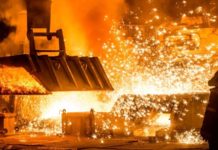
[miningmx.com] — “US TO Issue Tougher Fuel Standards for Automobiles”, reads a headline in the New York Times this week.
The story refers to the Obama administration’s tougher stance on emissions control and fuel efficiency of motor vehicles.
By 2016, the US hopes its passenger and light truck fleet will be about 40% cleaner than it is at present. The new rules will mean that vehicles will have to average 35.5 miles per gallon, or 6.62 litres per 100km.
Diesel vehicles are much more efficient when measured over the short term. A 2-litre Volkswagen Jetta (diesel) gets about 41 miles per gallon – 5.73 litres of diesel per 100km worth of travel.
At the bottom of the pile is a 2009 Lamborghini Murcielago, which guzzles 18 litres of petrol for every 100km travelled on the open road.
Granted, the fine machine can travel at around 330 km/h and is available by request only for a cool $358 000. So if you can afford the car, you can fill it with jet fuel if it were possible.
There is no doubt, however, that global emissions control will become tighter as we worry about the impact on the environment and as weather patterns become fiercer.
The two local platinum majors, Anglo Platinum and Impala Platinum, are price makers and not price takers. The market is so tight – gold production is roughly 14 times the size of the platinum market. What happens if there is a platinum demand explosion over the next decade?
We are going to wish for the mid-tier and explorers to start producing more. Predictions are that the current number of 800 million cars on the road could swell to three billion by the year 2035.
When it comes to platinum’s prospects, the big question is whether the combustion engine has a future.
Batteries vs fuel cells
What will the majority of future hybrids look like – batteries or fuel cells? You know the saying, the rocks did not run out when the Stone Age ended. I suspect the same will be true of oil.
So, there may be four times as many cars over the next two-and-a-half decades. Also four times as many catalytic converters, but I doubt they will all be combustion engines.
As an investor, you stand to benefit by being in one of the major platinum producers.
I choose Impala Platinum. There are fewer problems at the world’s second-largest platinum producer.
Implats arguably has better assets than its competitors.
It took a crisis to prove that Implats is the most financially sound of the major platinum producers. It helps that its head Dave Brown was previously in charge of the company’s finances.
AngloPlat has had some problems of its own, including a poor safety record under previous head Ralph Havenstein.
Anglo CEO Cynthia Carroll’s approach was to bring out the long broom and sweep the cupboard clear – Havenstein was shown the door, or took it himself. Former AngloPlat CEO Barry Davison is hardly an ally and has been voicing his opinion as a shareholder.
Davison and analysts are pretty much on the same page when it comes to AngloPlat’s prospects over the next 18 months.
Amandelbult and Rustenburg are experiencing some challenging times, contributing to their parent company’s handsome dividend payments being scrapped for the time being.
Since Xstrata bailed on Lonmin and the board of the platinum producer decided it was a bad idea, the market decided that the value of Lonmin should be much lower.
It looks ugly at Lonmin. The firm is looking to raise $457m.
If you don’t follow your rights, you may be sorry later. Investors are offered 900 pence now, versus the 3 300 pence offered by Xstrata last year. Those were the days my friend. I thought it was generous.
The proceeds of the rights issue will strengthen the firm’s balance sheet in these uncertain times.
There is always a certain irony in raising money at the bottom of the market, because that is exactly when you need it.
Aquarius: well, a similar sort of story here.
The group has placed convertible bonds and had a rights issue to bolster its financial health and for an acquisition. The big plus for Aquarius is that despite teething problems, the acquisition, Ridge, is a proper mine.
Northam: here Tokyo Sexwale and Mvelaphanda are part of the problem, which is a nice one to have. The Booysendal asset is like the treasure chest that needs to be unlocked.
The unlocking part requires a big key that is going to cost a lot of money. The current flagship mine is the world’s deepest platinum mine. That tells you simply it costs more to mine.
So, in summary:
* AngloPlat: no dividend payment for the time being;
* Aquarius and Lonmin: raising money through equity issuances, which will have a dilutive effect for those not participating; and
* Northam: no deal with Impala and the headache of what to do about Booysendal for Mvelaphanda Resources.
* So Impala it is for us.
Naryshkine is with asset management firm Vestact.











